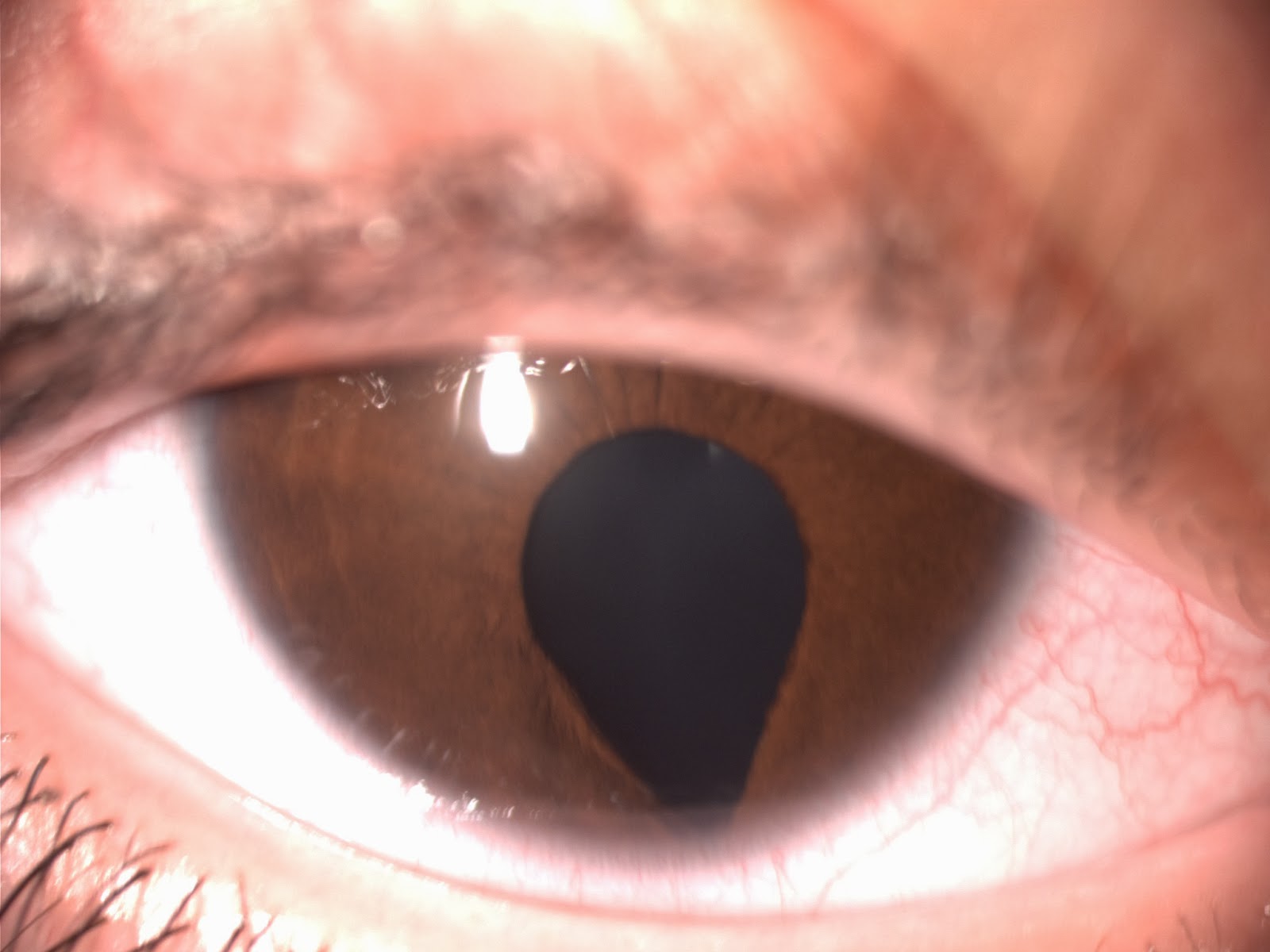
Fundus coloboma can be associated with variable degree of microphthalmos. In extreme cases, cysts can develop from the margin of the coloboma and extend into the orbit, making the eye functionless, while subtle involvement such as mild hypoplasia of iris, a notch in the pupillary border, etc., have no effect on the function of the eye. Complete coloboma describes defects involving the optic disc, choroid/retina, ciliary body, zonules, lens (notching) and iris. Similar defects seen elsewhere have been termed atypical colobomata. Typical coloboma is the term used to describe the defects seen in the inferior/infero-nasal part of the fundus that can be clearly attributed to defect in closure of embryonal fissure. Coloboma of the fundus is caused by defective closure of the embryonal fissure.

However, a majority of the eyes have the optic disc within the choroidal coloboma, thus making it difficult to safely administer a complete treatment.Ĭoloboma is a Greek word that means mutilation. Prophylactic laser retinopexy to the border of choroidal coloboma appears to be an attractive option for reducing risk of coloboma-related retinal detachment. Cataract surgery in these eyes can pose a challenge due to a combination of microphthalmos and relatively hard lenses, resulting in increased risk of intra-operative complications. Current day surgical management of coloboma-related retinal detachments has evolved to yield consistently good results.

While the basic birth anomaly cannot be corrected, most of the complications listed above are correctable to a great extent. The visual acuity is affected when coloboma involves disc and fovea, or is complicated by occurrence of retinal detachment, choroidal neovascular membrane, cataract, amblyopia due to uncorrected refractive errors, etc. In the fundus, the variability involves the size of the coloboma (anteroposterior and transverse extent) and the involvement of the optic disc and fovea. At one extreme, the eye is hardly recognisable and non-functional-having been compressed by an orbital cyst, while at the other, one finds minimalistic involvement that hardly affects the structure and function of the eye. Ocular colobomata are more often associated with systemic abnormalities when caused by chromosomal abnormalities. The occurrence of coloboma can be sporadic, hereditary (known or unknown gene defects) or associated with chromosomal abnormalities.

Typical ocular coloboma is caused by defective closure of the embryonal fissure.


 0 kommentar(er)
0 kommentar(er)
